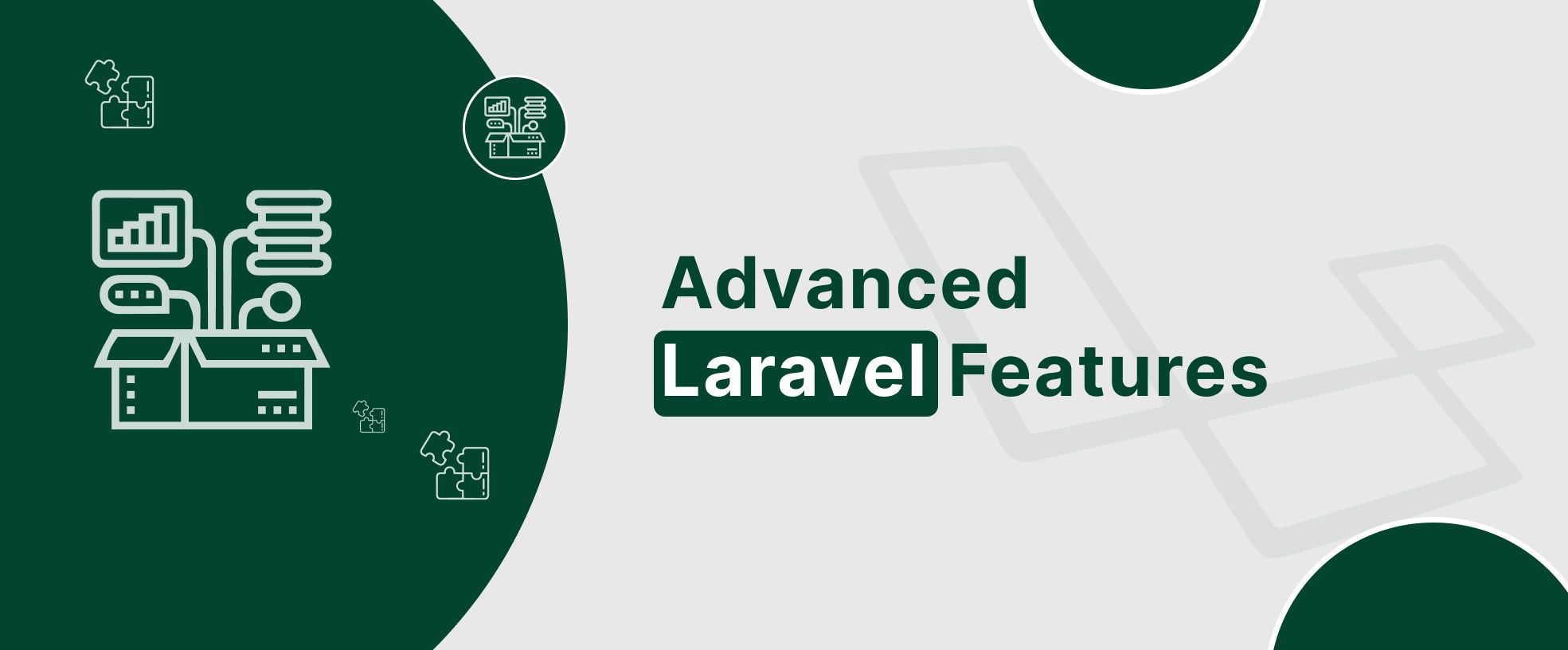Exploring Advanced Laravel Features – Enhance Your Applications

Recently, techjury has declared that 94% of customers say lousy web design leads to distrust. Therefore, we need a robust web design platform to build trust among the users, and Laravel resides on the top of PHP development frameworks used to create a wide range of web solutions for diverse industry verticals. Laravel offers advanced laravel features to enhance your applications in cost-effective ways. Therefore, the post describes a few of the latest features of Laravel.
#1 – Service Container in Laravel:
What Is It?
Laravel service container is a tool. It helps to manage class dependencies and perform dependency injection in the PHP framework.
Dependency injection is a process of injecting class dependencies into a class using the constructor or setter method. However, the service container works behind the scenes to inject class dependencies automatically. It is also called a zero configuration solution. The service container has two significant features: Binding & Singleton.
Advantages of Service Container:
The Best Practices:
You can use the following best practices to leverage the service container efficiently.
#2 – Laravel Queues & Job Processing
What Is It?
When an application needs to manage time-consuming tasks or process a large amount of data, a queue system in the application proves helpful. The Laravel queue feature allows you to differentiate the processing of a time-consuming task. Thus, it significantly enhances the application’s response time.
Advantages of Laravel Queue:
The Best Practices:
#3 – Laravel Custom Artisan Commands
What Are They?
Artisan is a command line interface in Laravel. Besides built-in commands, Laravel allows the creation of custom commands to accomplish specific jobs.
Advantages of Laravel Custom Artisan Commands:
The Best Practices:
Check out the Official Laravel Documentation for more info!
#4 – Laravel Events & Listeners
What Are They?
The event system in Laravel offers a simple observer implementation. So users can subscribe and listen to events in the application. It decouples various aspects of the application and implements domain events.
Advantages of Laravel Events & Listeners:
The Best Practices:
#5 – Laravel Model Factories & Seeders
What Are They?
Realistic, simple data is crucial for application testing. Model factories and seeders provide a powerful way to create test data quickly and consistently.
Advantages of Laravel Model Factories & Seeders:
The Best Practices:
#6 – Laravel Middleware
What Are They?
Laravel middleware offers a convenient way to filter HTTP requests entering your application. Laravel allows you to develop custom middleware to accomplish specific functionality in the application.
The Best Practices:
Advantages of Laravel Middleware:
10+ Expert Tips & Tricks for Laravel Development in 2025!
#7 – Laravel Eloquent
What Are They?
Eloquent is Laravel ORM. It provides powerful features to deal with databases. It can improve your data management capabilities.
Advantages of Laravel Eloquent:
The Best Practices:
#8 – Laravel API Resources & Transformations
What Are They?
API resources enable the transformation of your models and model collections into JSON responses. Thus, Laravel programmers can create a transformation layer between models and API resources.
The Best Practices:
Advantages of Laravel API Resources:
#9 – Laravel Custom Validation Rules
What Are They?
Laravel offers built-in validation rules, but developing custom validation rules permits developers to execute complex and application-centered validation logic.
Advantages of Laravel Custom Validation Rules:
The Best Practices:
#10 – Laravel Caching
What Are They?
Laravel delivers a unified API for various caching backends. It makes caching easy for your Laravel application.
The Best Practices:
Advantages of Laravel Caching:
Best Security Features in Laravel to Protect Your Applications!
Wrapping Up
We have seen that the use of advanced features in Laravel makes application development a breeze. Advanced features of Laravel enhance the application’s performance, scalability, and maintainability.
It’s true that mastering these advanced features demands a lot of effort and expertise, even for experienced Laravel developers. You can consider a competent team of Laravel developers for your following Laravel development projects. Think iCommuneTech as an ideal option for your search for a Laravel development company.
You will get a free quote and detailed guidance from our team. Just call us and join us forever!

